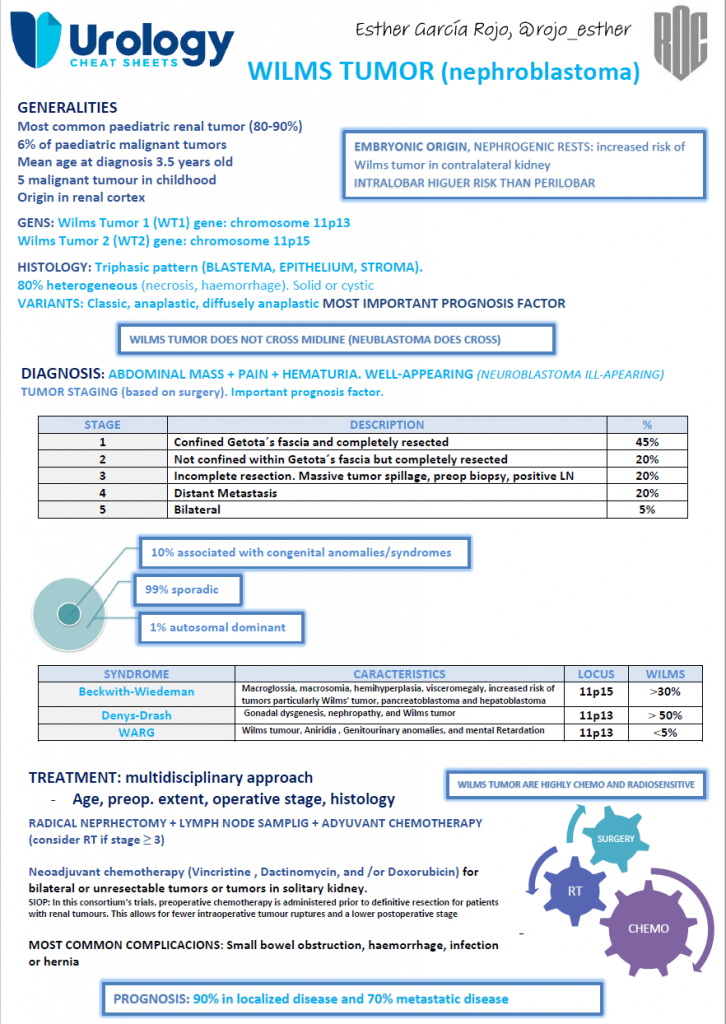Wilms tumor or nephroblastoma is the most frequent tumor of the kidney in infants and children.
The incidence of Wilms tumor is 8.2 cases for every 1 million children younger than 15 years and most often affects children ages 3 to 4.
Pathologically, a triphasic nephroblastoma comprises three elements: blastema, stroma and epithelium.
Signs and symptoms of Wilms’ tumor vary widely, and some children don’t show any obvious signs, but most children with Wilms’ tumor experience one or more of these: abdominal mass, abdominal swelling, abdominal pain, fever, constipation or high blood pressure.
Wilms’ tumor can occur as part of rare syndromes, including WAGR syndrome, Denys-Drash syndrome or Beckwith-Wiedemann syndrome.
The outcome of Wilms tumor has improved significantly over the past few decades; the 5-year survival rate has improved from 20% in the 1960s to over 90% in the current decade. This improvement is due primarily to a multidisciplinary approach to treatment and to a series of cooperative clinical trials aiming at optimizing therapy and risk stratification, led by two large study groups: the North American Children’s Oncology Group via The National Wilms Tumor Study (NWTS) group, and the European Societe Internationale D’oncologie Pediatrique (SIOP) group.
Do you want to know more about this pathology?
Don’t miss this Urology Cheat Sheet!


